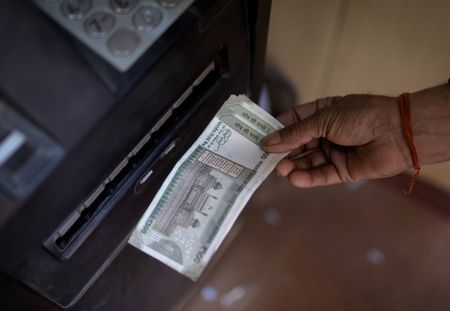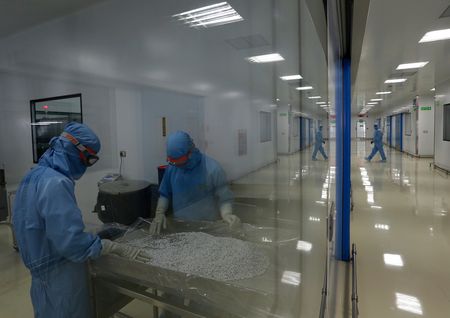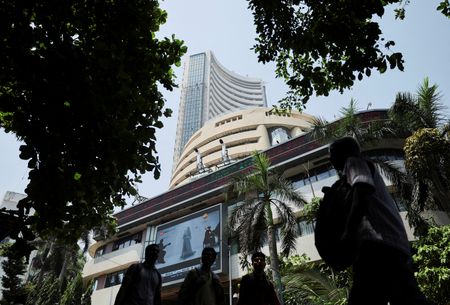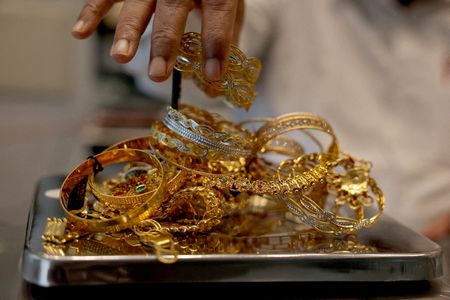By Jaspreet Kalra
MUMBAI (Reuters) – The Indian rupee managed to hold above its all-time low on Friday, supported by likely central bank intervention, even as steep U.S. tariffs on branded drug imports compounded lingering concerns over a hit to trade and foreign portfolio flows.
The domestic currency was expected to open near and dip past its lifetime low of 88.7975 at the open, which it avoided largely due to intervention from the Reserve Bank of India, traders said.
The rupee was last hovering near the 88.70 mark, little changed on the day.
The RBI likely intervened in the non-deliverable forwards (NDF) market and the local OTC spot market to support the rupee, seven traders told Reuters.
U.S. President Donald Trump unveiled a new round of tariffs on Thursday, including a 100% duty on any branded or patented pharmaceutical products. Indian pharmaceutical stocks fell 1.7%, dragging the benchmark Nifty 50 index nearly 0.4% lower.
IT stocks, in the spotlight after the U.S. sharply hiked fees on H1-B visas late last week, were down more than 1% as well.
Amid the lingering worries about how tariffs could cast a pall over India’s growth outlook, foreign investors have sold over $1.5 billion worth of local stocks on a net basis in September so far, hurting the rupee.
“Unless the currency rises above 88.65 on an hourly closing basis, downside bias will prevail. If it rises above 88.58, then we could see a reversal of some of the recent declines. Today’s move would be completely directed by the RBI,” a trader with a private bank said.
The RBI, for now, “appears inclined to keep USD/INR below 88.80, but if the pressure persists, I don’t think they will hold the level indefinitely,” an FX trader at a Singapore-based hedge fund said.
“The rupee’s movements are reflecting pipeline risks for trade numbers,” Radhika Rao, senior economist at DBS, said in a note. “There is wariness over further punitive action if an impending U.S. plan to levy charges on outsourcing to foreign countries (through the HIRE Act) is passed,”
Elsewhere, the dollar strengthened in light of stronger-than-expected U.S. economic data as traders pared bets of sharp U.S. rate cuts.
Against a basket of peers, the dollar was last at 98.4, after rising 0.6% on Thursday. Asian currencies were trading modestly weaker.
(Reporting by Jaspreet Kalra; additional reporting by Dharamraj Dhutia; Editing by Janane Venkatraman)










